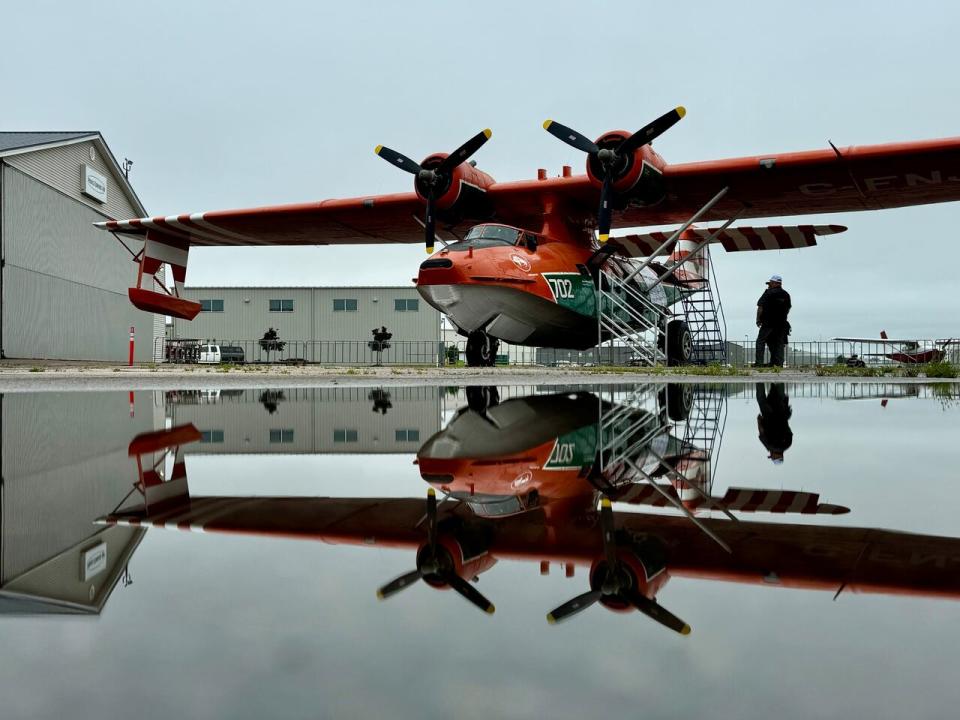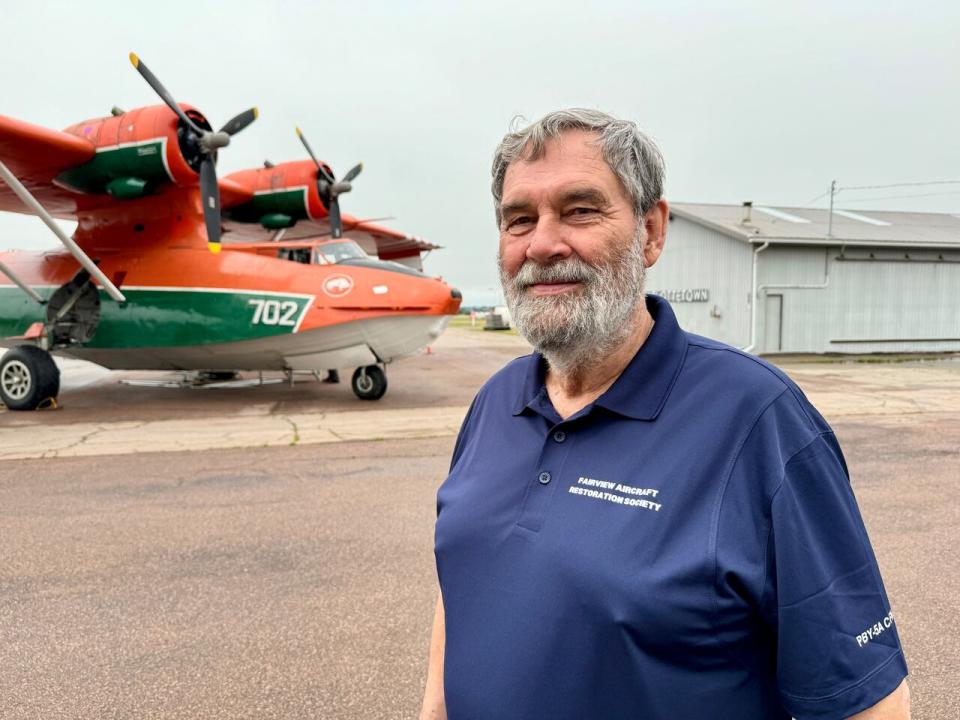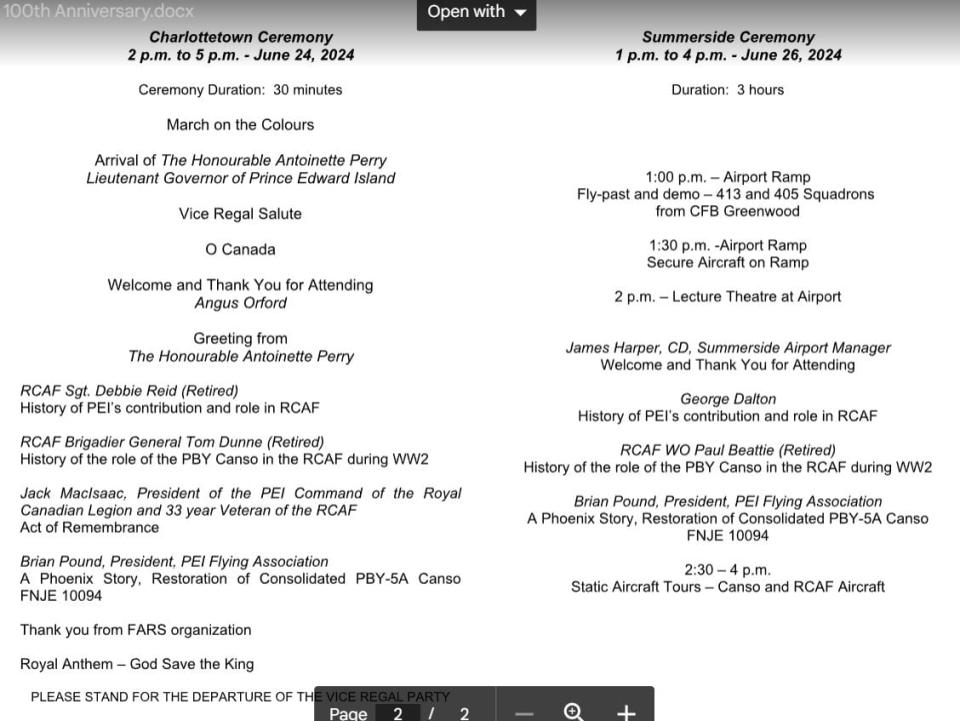Islanders help celebrate 100 years of the Royal Canadian Air Force
Nearly 100 people piled into a hangar near the Charlottetown Airport on Monday to celebrate the centennial of the Royal Canadian Air Force.
Debbie Reid, president of the RCAF Association 201 (Confederation) Wing in Charlottetown, was one of them.
The retired sergeant, who served in the military for 23 years, was a proud member of the Royal Canadian Air Force, she said.
"I loved being in the uniform. I loved working in the military," she said.
Reid said she is honoured to be involved in this centenary events.
"P.E.I. is great," she said. "When you ask people to come together, they definitely come together. To [have] this many people who came in today... is fantastic."
For the RCAF's anniversary, a Canso airplane, of the type that played a significant role in the Second World War, made it all the way from Alberta to P.E.I.
After the aging aircraft had been found near the shore outside Inuvik, N.W.T., it was put on custom-made skis and pulled out of the water before making its way to Alberta.

Prince Edward Islander Carl Farnsworth flew on the Canso during the war. The RCAF flight engineer thought he'd never see the aircraft again.
"Just wonderful, wonderful to see it, it really is, like seeing an old friend," he said Monday.
A group of farmers made it their hobby to repair the aircraft, and it took almost 10 years to restore the plane.
Jim Allan, for years the president of Fairview Airplane Restoration Society, was one of the people who dedicated his time to fix and reassemble the plane.
"It's a piece of our history that needs to be told," he said.

During World War II, the Canadian-built Canso was classified as a torpedo bomber, used mostly for reconnaissance and anti-submarine patrols.
Out of the 3,600 Cansos that were built worldwide, only 13 are known to remain.
With bright orange wings and a green and white hull, it has a 32-metre wingspan, and measures 20 metres long and about eight metres high.
It's an ugly duckling on the ground, but it's a beautiful bird in the air. — Jim Allan
It's an amphibian, which means it can land on either water or land.
"It's an ugly duckling on the ground, but it's a beautiful bird in the air," Allan said.
To Allan, the most fascinating fact about the plane is "the endurance and the role that it played during the war for a plane that was considered obsolete when the war began....
"It was the slowest airplane in the Canadian Air Force as a fighting airplane and it just endured forever. It also had a life after the air force because it was suitable for the northern bush and for water bombing as well...
"It saved a lot of lives."
The Canso's next stop will be in Summerside on Wednesday. A full schedule of events can be seen here:



